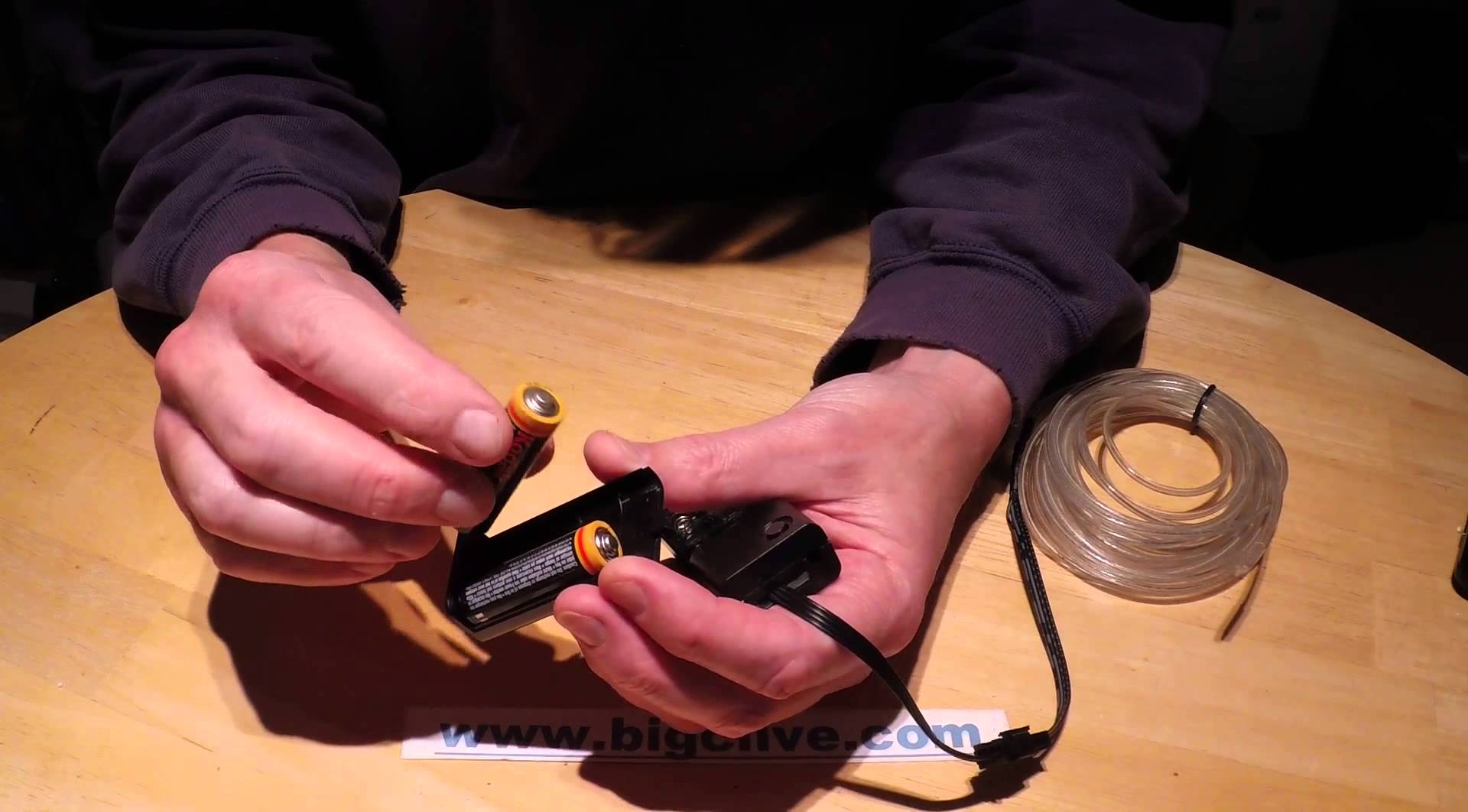Chasing electroluminescent wire. (A look inside the controller)
This is a novel twist on the commonly available electroluminescent wire. Instead of the single connection outer spiralled wire around the electroluminescent core there are three outer wires forming a helix along the wires length, that can be energised individually. When these are energised sequentially it creates a subtle chasing effect along the length of the wire.
Electroluminescent material usually works like a light emitting capacitor, in that it has an inner and outer electrode on a phosphor loaded dielectric layer. When an AC voltage is applied across the two electrodes the phosphor glows. Because of this, the control circuit has to use AC switching devices like triacs to switch the channels. It also has to generate a modestly high voltage (around 100V) at a modestly frequency in the region of a few hundred Hertz. In basic fixed output modules this can be as simple as a step-up transformer with a single transistor feedback circuit.
In this controller a small anonymous microcontroller (probably a PIC12 or clone) is used to drive the step-up circuit and switch the outputs via small AC switching components.

